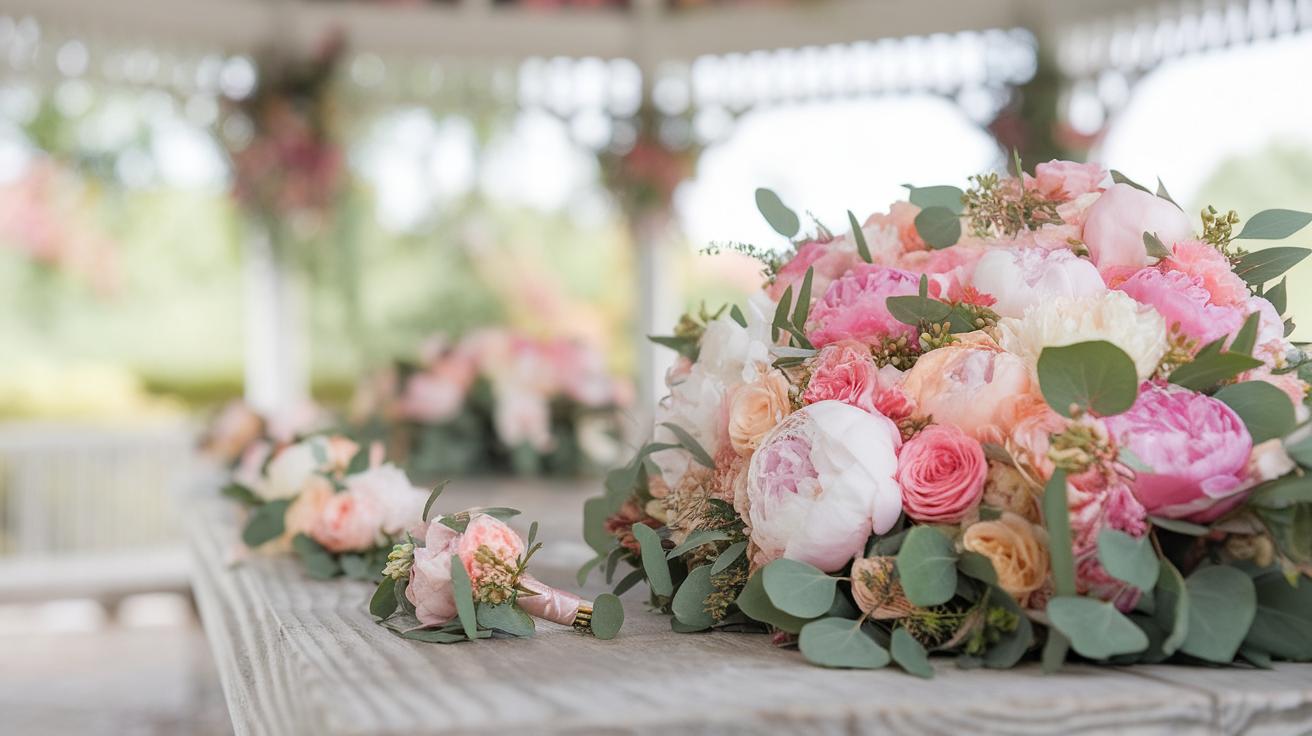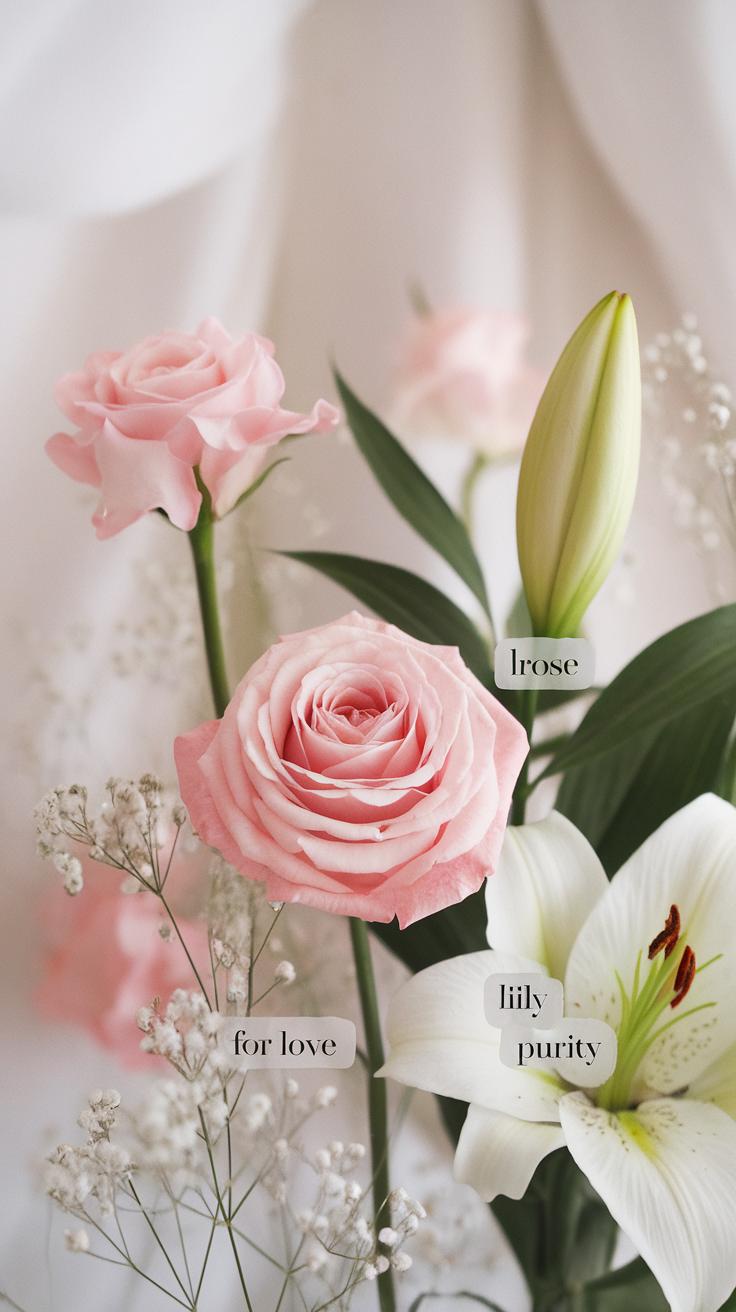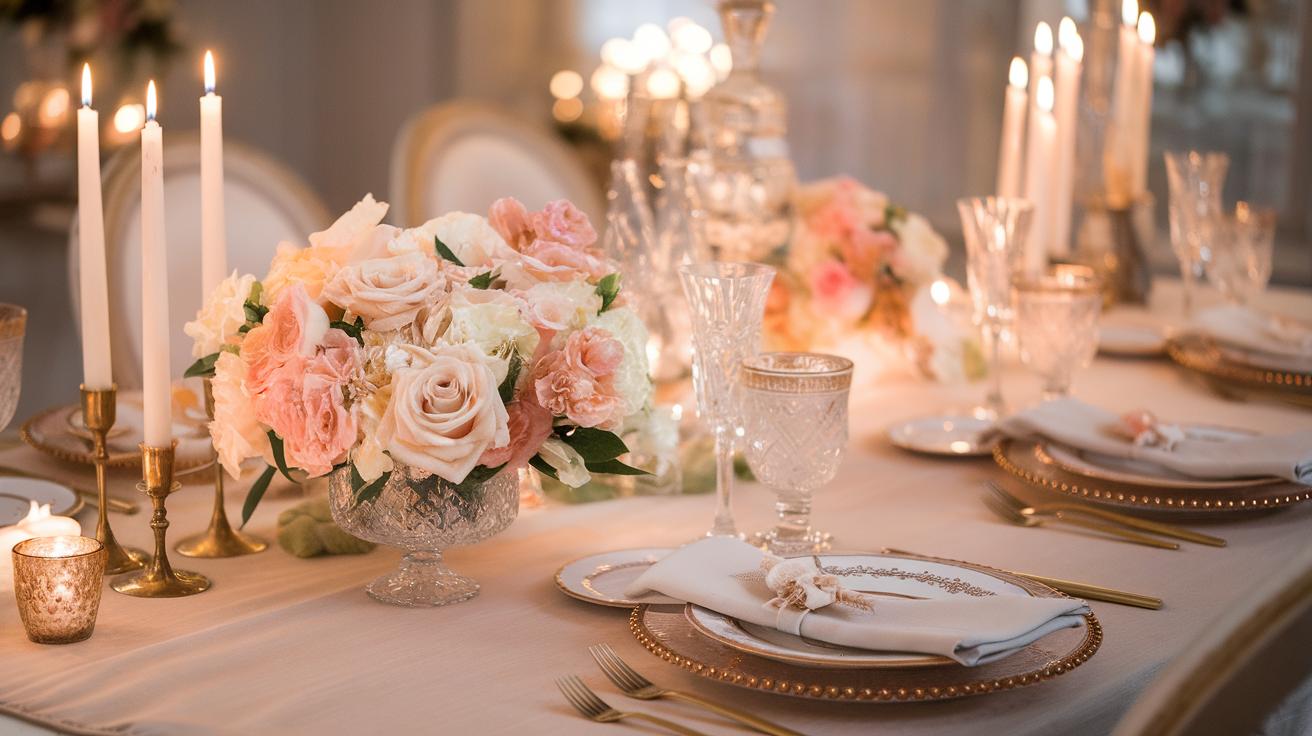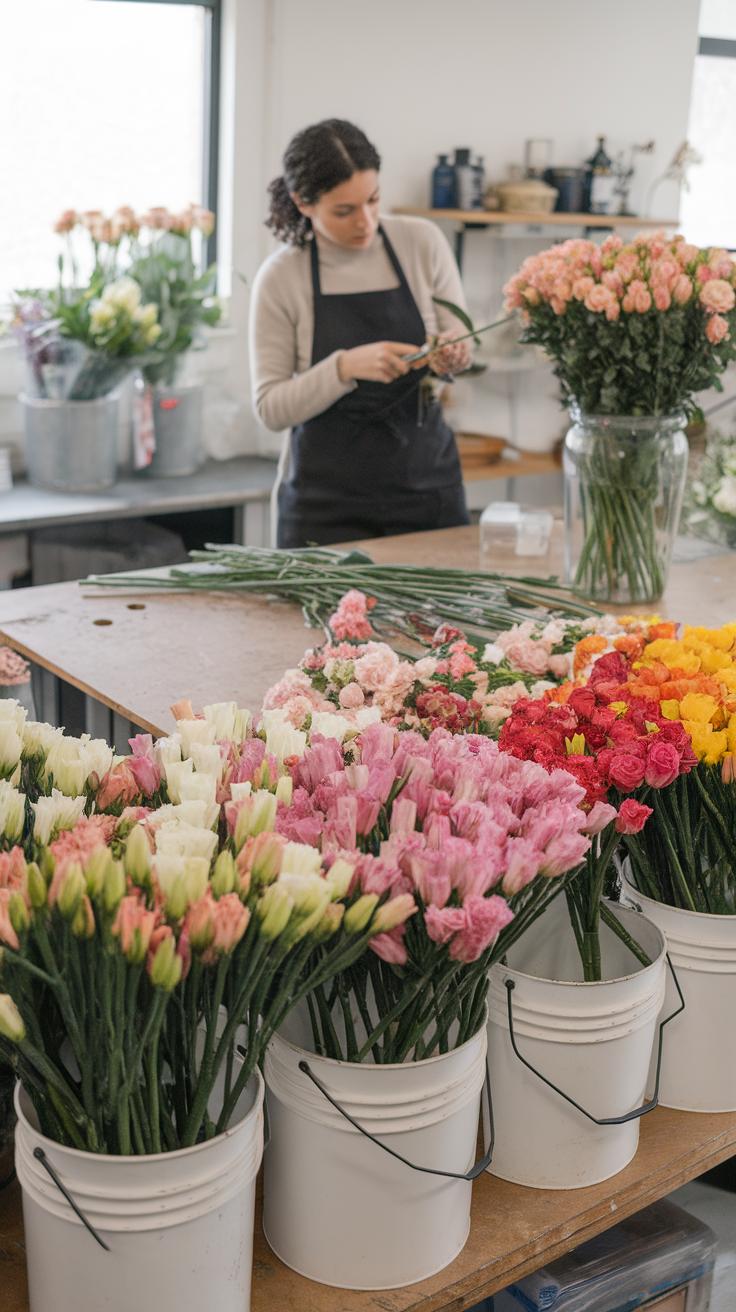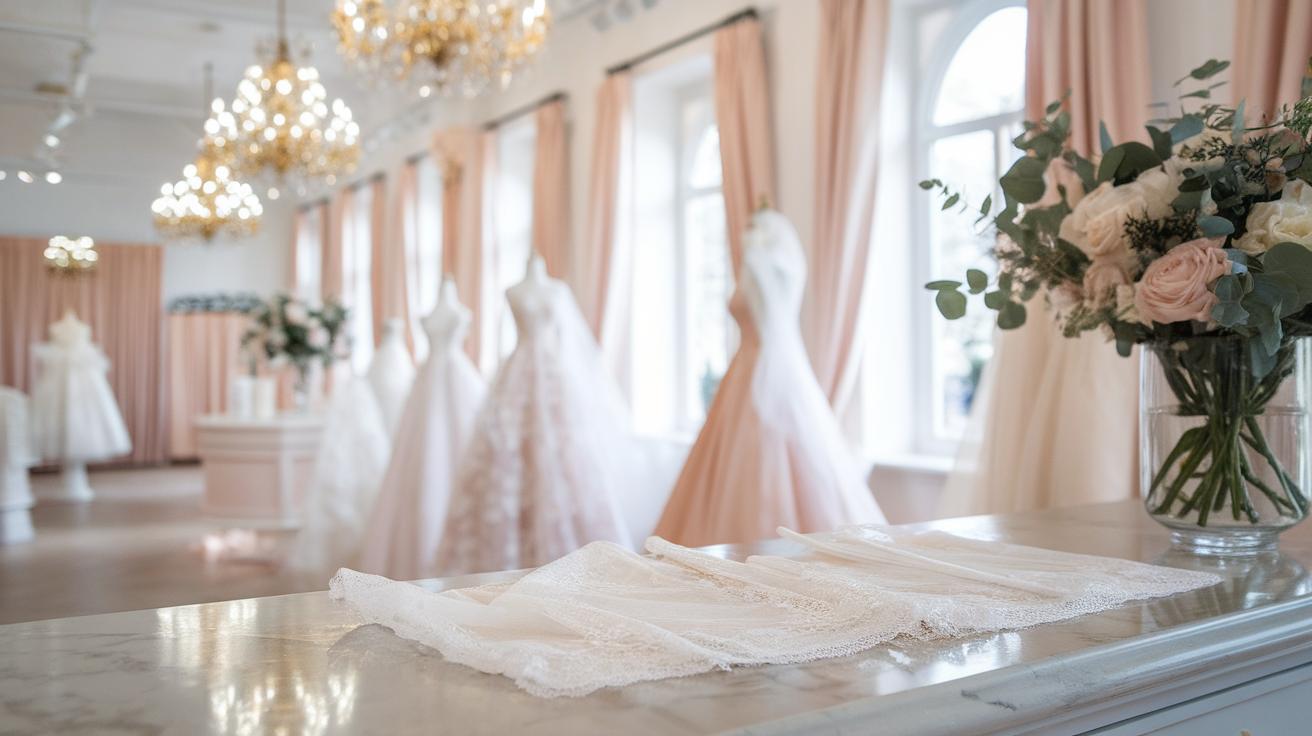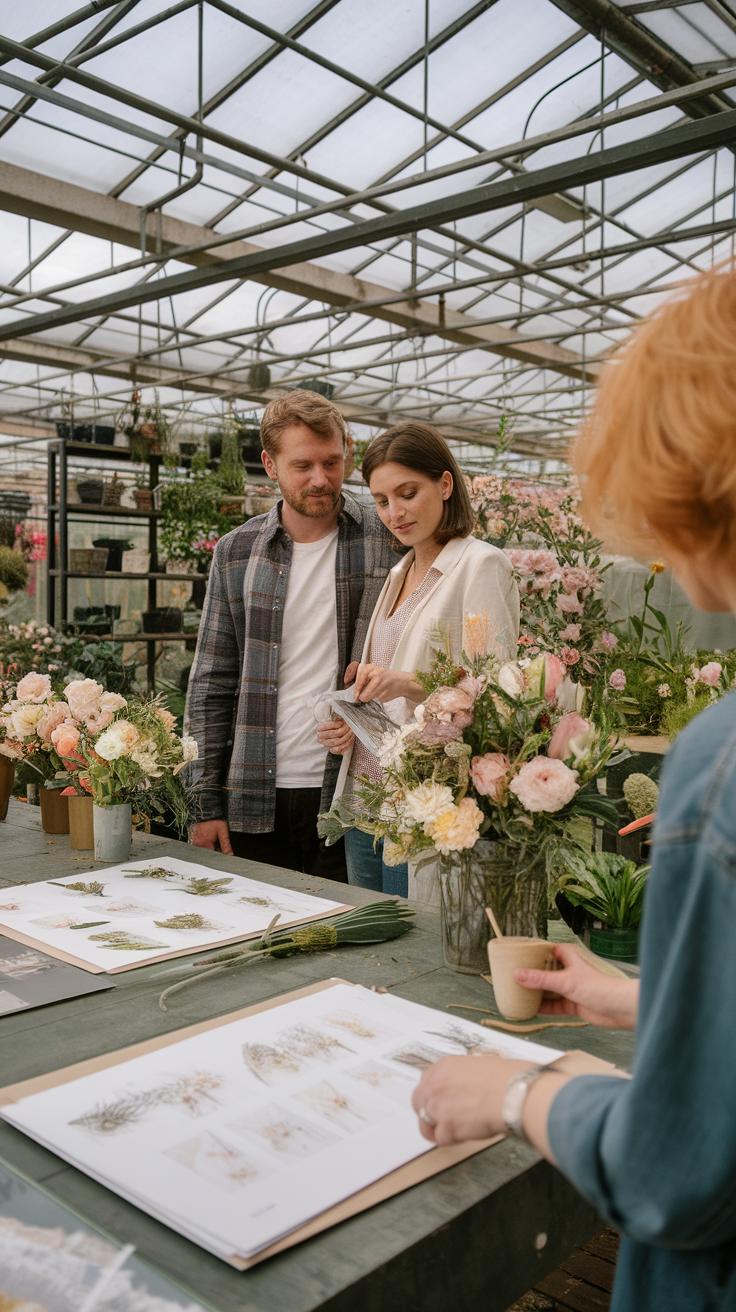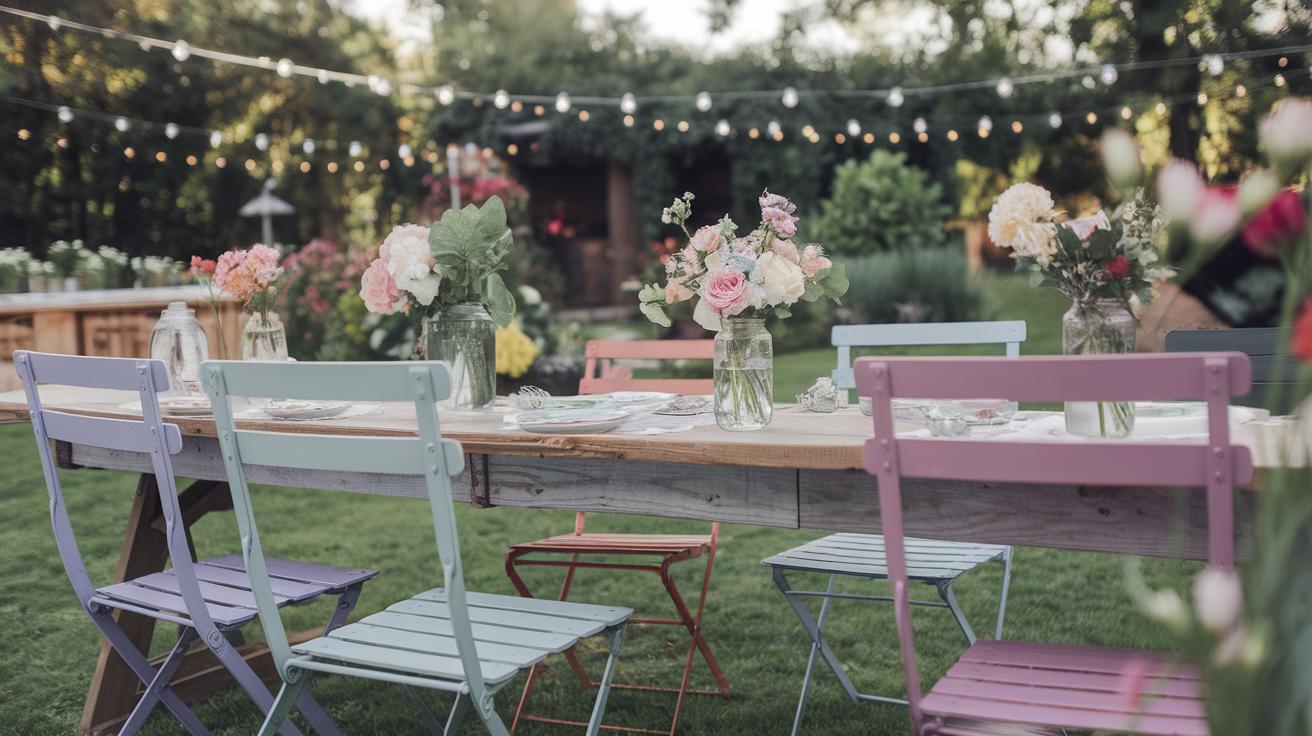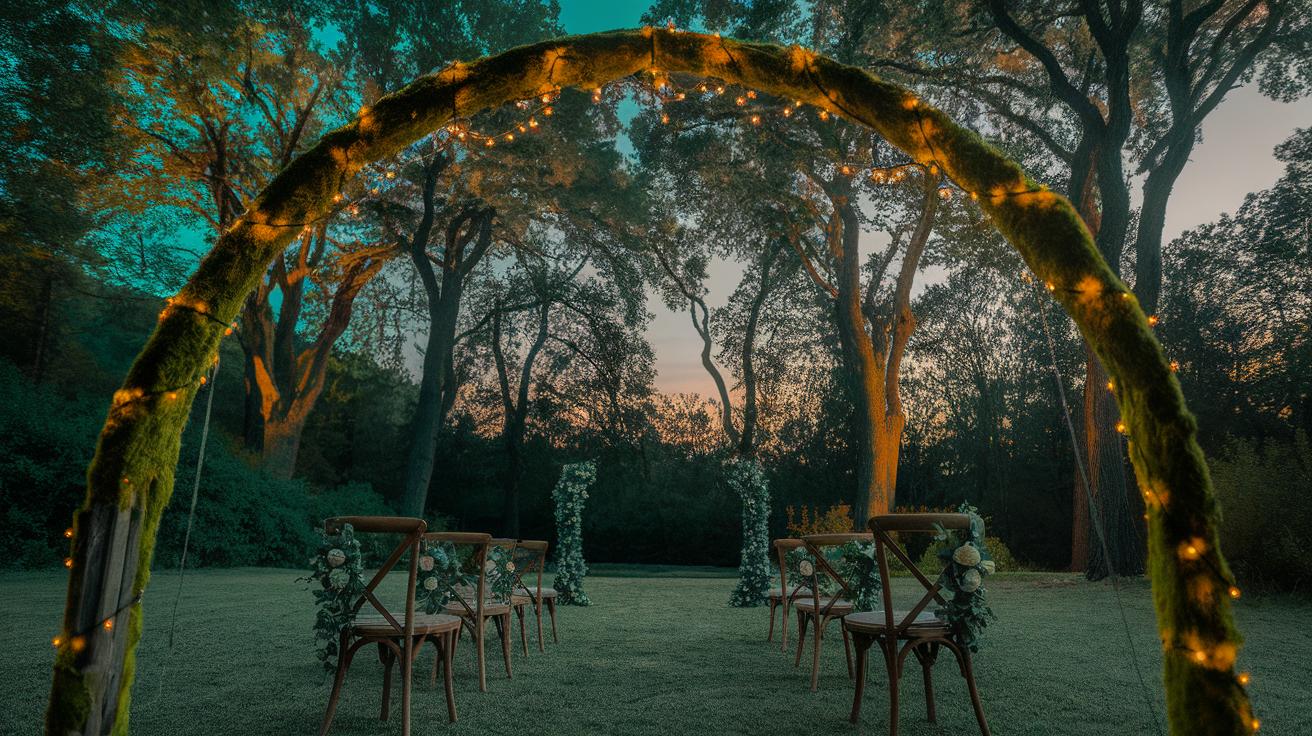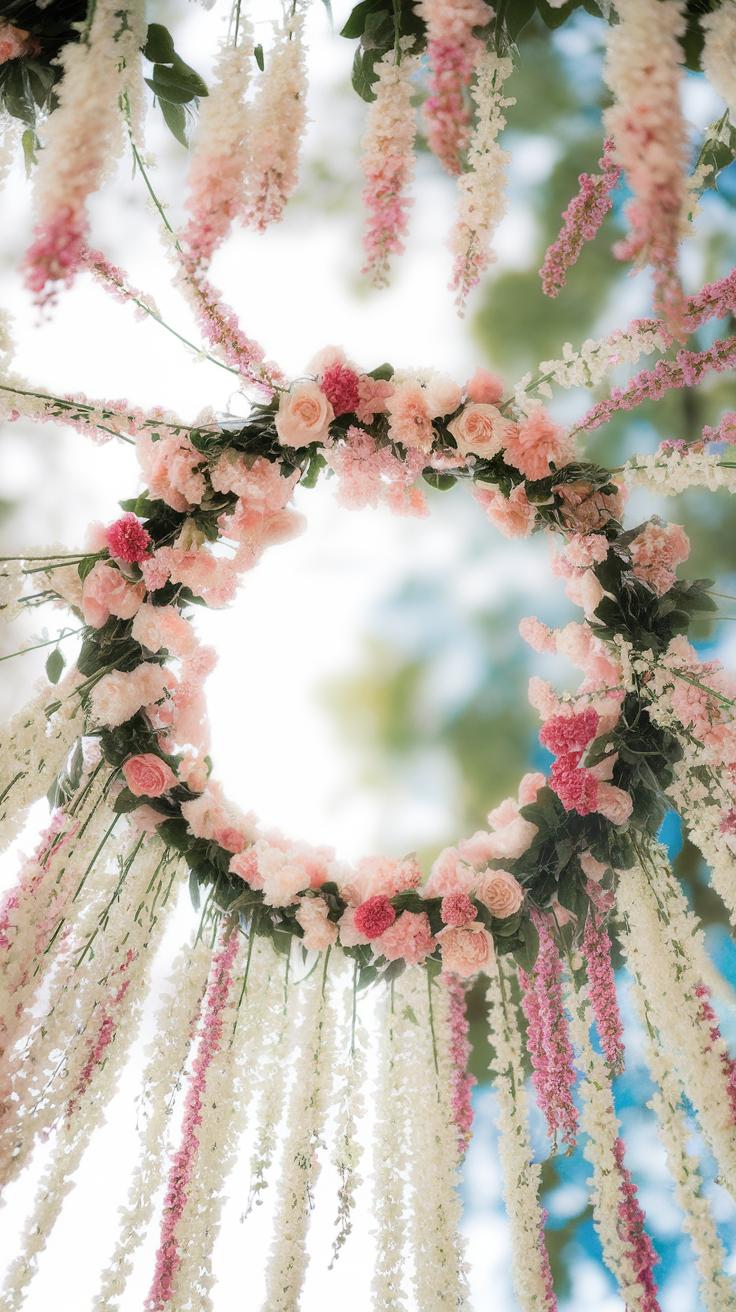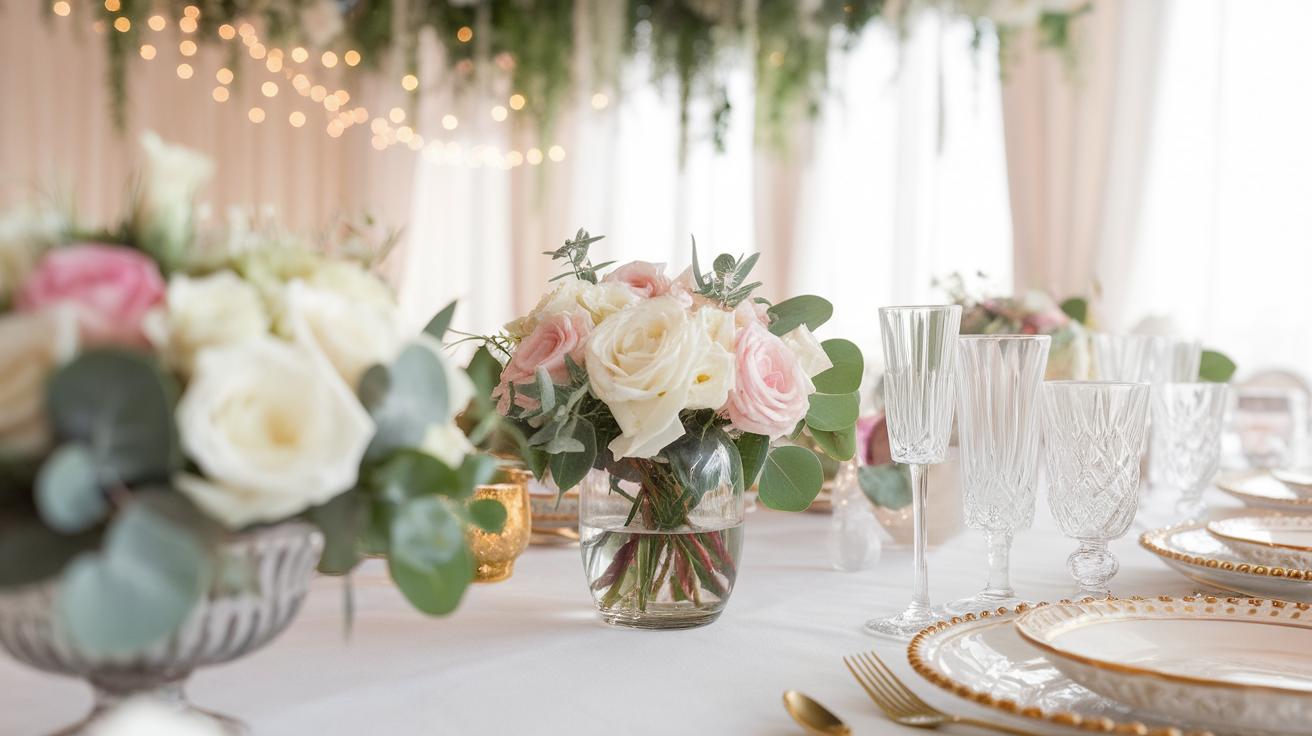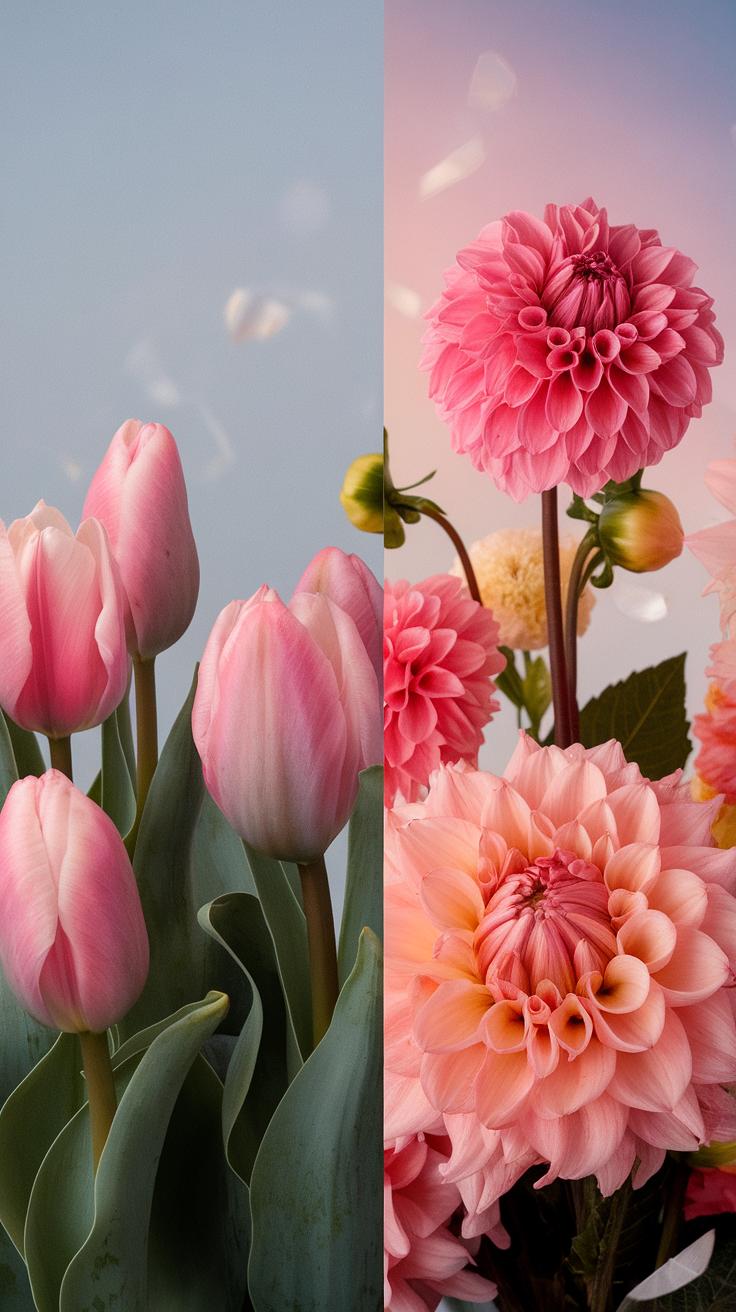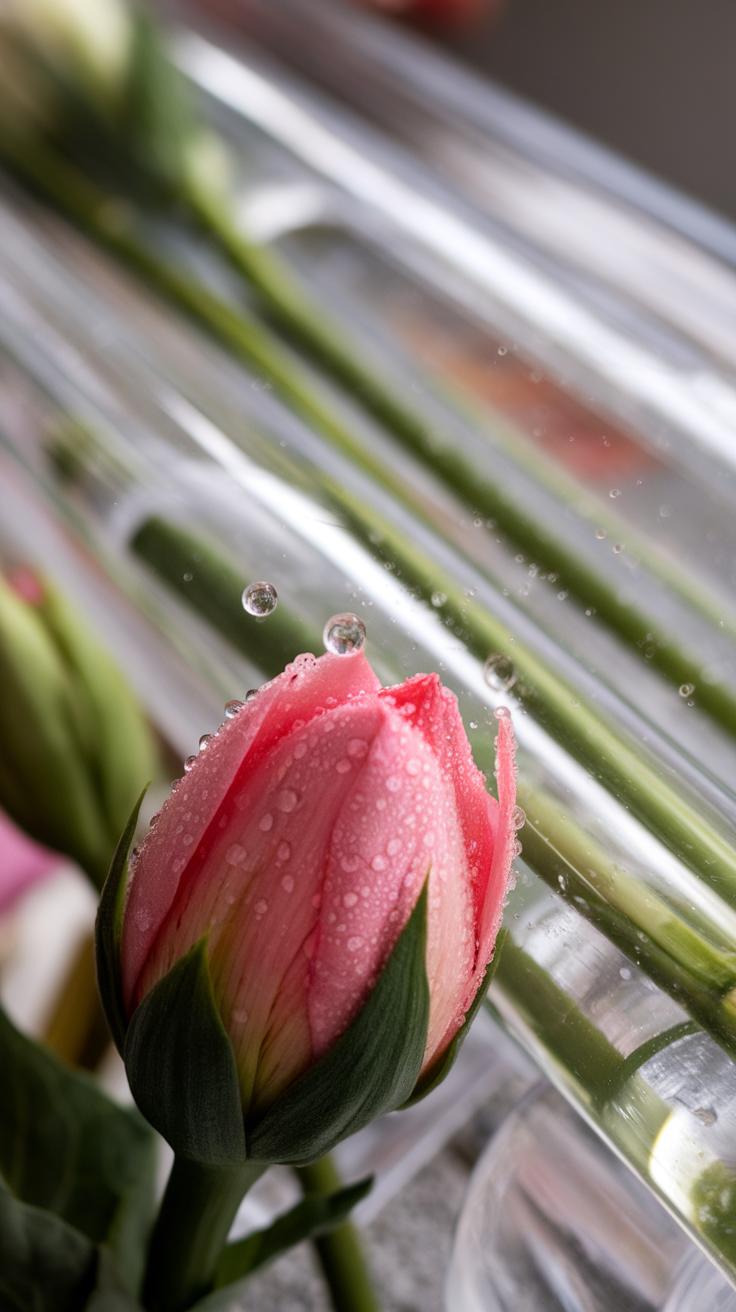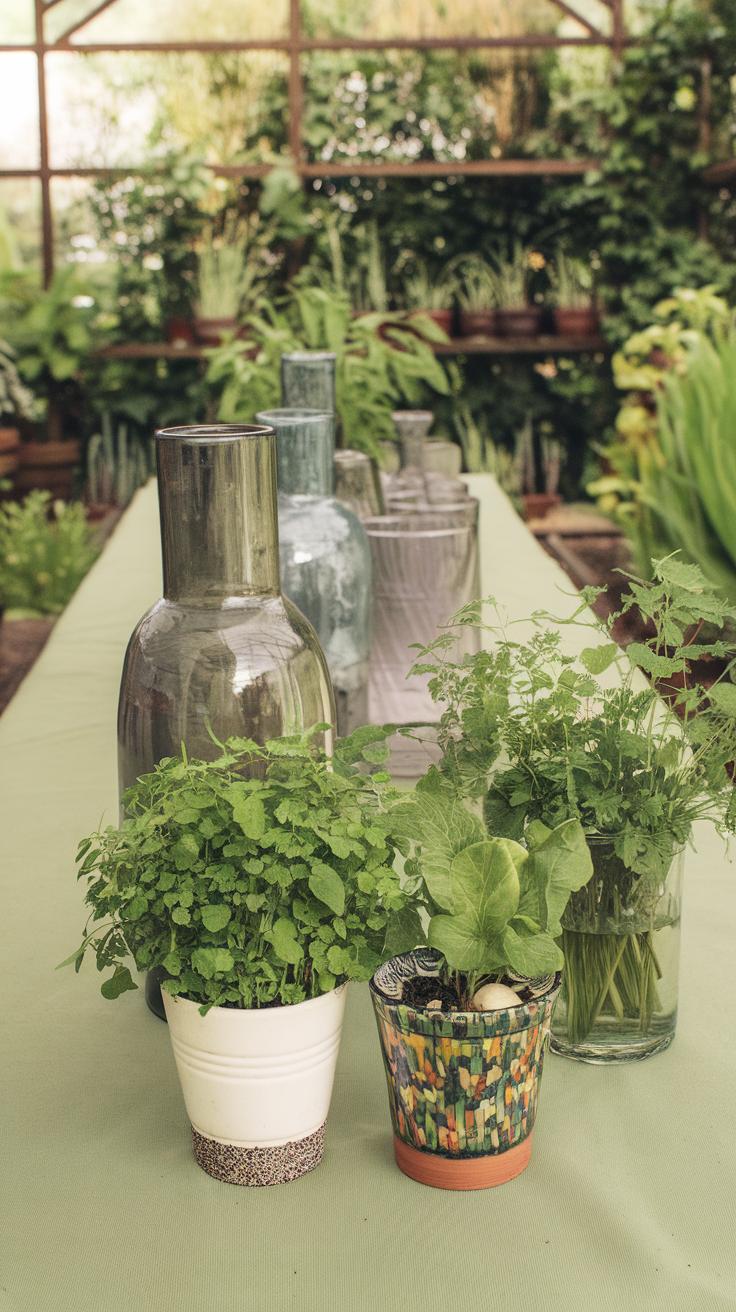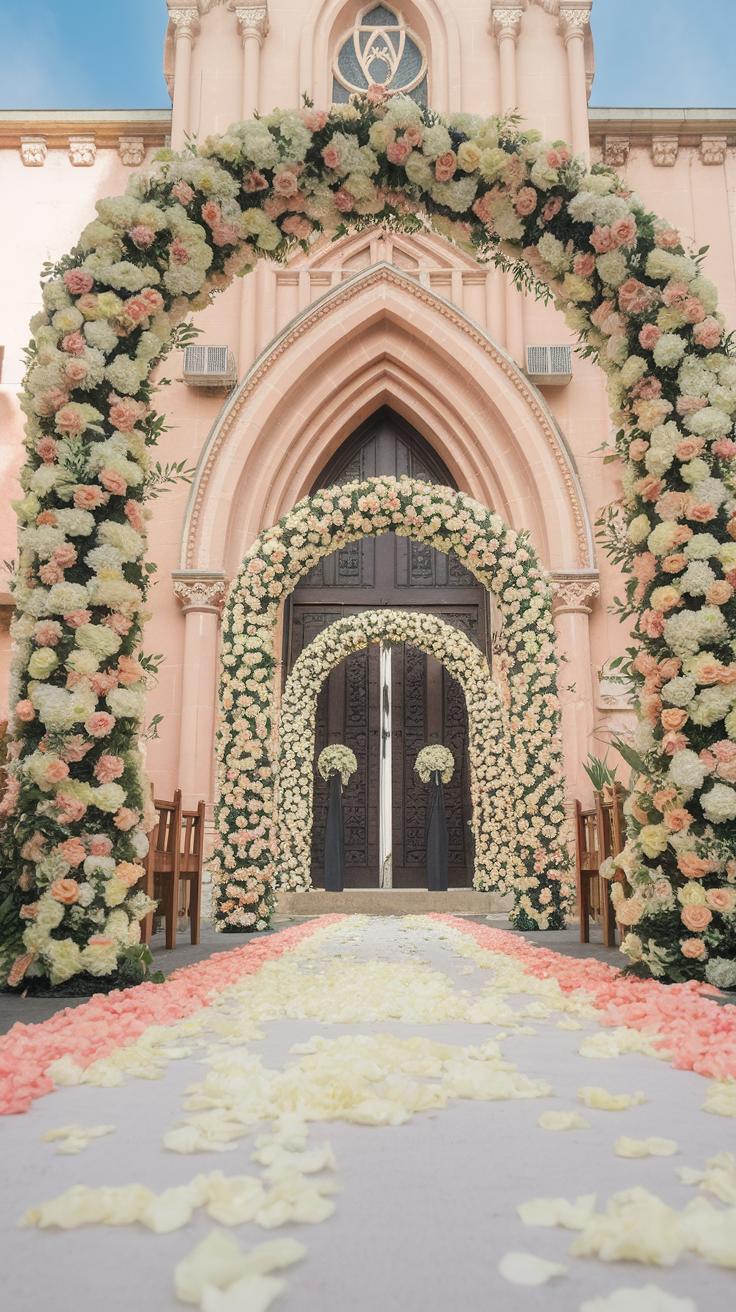Introduction
Wedding flowers play a critical role in shaping the atmosphere and style of your special day. They add color, life, and a natural touch that complements the theme and venue. Whether you prefer classic roses, wildflowers, or modern tropical arrangements, your choice of florals can reflect your personality and taste. Considering your wedding florals early helps you align other decor elements and keeps your planning organized.
You can select wedding flowers based on season, color scheme, and meaning. Some flowers also mark special wedding milestones, such as roses symbolizing love or lilies representing purity. Flowers don’t just sit on tables; they appear in bouquets, boutonnieres, arches, and centerpieces. This article guides you step-by-step through selecting, styling, and caring for wedding florals to make your venue shine and your memories last.
Understanding Wedding Flowers and Their Meaning
Flowers speak without words. Choosing specific blooms for your wedding can share your story and feelings.
Each flower carries a meaning. Roses often stand for love and passion. Lilies represent purity and renewal. Peonies suggest happiness and prosperity. Tulips symbolize grace and elegance. Understanding these meanings allows you to pick flowers that reflect your relationship.
Your floral choices can reveal your personality and values. If you both appreciate tradition, classic roses suit you. For a couple who loves nature, wildflowers offer charm and simplicity. Think about what you want your flowers to say about you as a couple.
The wedding theme and season affect flower selection. Spring invites peonies and tulips, while late summer suits sunflowers and dahlias. Matching flowers with the season keeps arrangements fresh and fits your overall style.
Popular Wedding Flowers and Their Symbolism
Roses remain a beloved choice. Red expresses deep love, white brings innocence, and blush tones show admiration. Lilies add elegance and represent purity, fitting for formal ceremonies.
Peonies appear soft and full. They promise good fortune and a happy marriage. Tulips come in many colors and express perfect love and care.
Other flowers include hydrangeas for heartfelt emotions and orchids for strength and beauty. Choosing flowers with symbolic meaning can add depth to your décor and ceremony.
Think about what messages you want your flowers to convey. Would you prefer romantic, powerful, or joyful notes? This can guide your selections.
Matching Flowers to Your Wedding Theme
Your wedding style should guide your floral choices. For a romantic feel, soft colors and voluminous blooms work well. Peonies, garden roses, and ranunculus fit this look.
A rustic wedding calls for wildflowers, sunflowers, and greenery that feels natural and relaxed. These flowers create a cozy, approachable vibe.
Modern weddings often use sleek, simple shapes and flowers like calla lilies or orchids. Their clean lines pair well with minimalist décor.
Seasonal flowers help keep your color palette consistent and lower costs. Spring offers tulips and daffodils, while fall shines with chrysanthemums and marigolds.
Ask yourself if your flowers match the mood and colors of your venue. This alignment makes your entire wedding décor look harmonious and intentional.
Planning Your Wedding Florals on a Budget
Your wedding flowers play a big role in the look and feel of your day. Managing costs while keeping your decor beautiful means making smart choices. Start by setting a clear floral budget before browsing designs or flower types. Knowing your limit helps avoid overspending.
Think about which arrangements will catch the eye the most. Investing more in your bridal bouquet or ceremony altar can create a stunning impact. For tables and other spaces, simpler, smaller arrangements save money and keep your style consistent.
Look for flower options that offer big volume without the big price. Some blooms last longer and look fresh even when bought in smaller quantities. Be open to mixing pricey flowers with budget-friendly alternatives to stretch your dollars.
Ask yourself: Which floral areas matter most to you visually? Focus your spending there. Prioritize quality over quantity, so each arrangement makes a statement without breaking your budget.
Budget-Friendly Flower Selection
Selecting flowers that are in season where you live can cut costs significantly. Seasonal blooms don’t need expensive shipping and are often fresher. Ask your florist which flowers grow locally during your wedding month.
Combine more expensive focal flowers like roses or peonies with simple filler flowers such as baby’s breath or greenery. This mix makes your arrangements feel lush without overspending. You might choose one standout flower and surround it with easy-to-find, affordable blooms.
Using greenery as a base also adds volume and texture at a low cost. Think eucalyptus, ferns, or ivy to frame your flowers beautifully. This approach helps you keep your floral look full and elegant on a budget.
Prioritizing Floral Arrangements
Focus your budget on key spots where guests will notice the flowers most. Your bridal bouquet deserves attention since it will be in many photos. Ceremony spaces like the altar or arch also benefit from larger, eye-catching displays.
For reception tables and smaller areas, choose understated centerpieces or even single stems in simple vases. These minimalist touches reduce expenses but still bring your floral theme throughout the venue.
Consider where guests will spend time and where flowers will be photographed. Allocate your resources accordingly. Limiting extravagant arrangements to a few prime locations often delivers the greatest visual payoff.
Have you thought about using floral accents instead of full arrangements in less prominent spots? This tactic can keep your wedding floral vision intact while respecting your budget.
Working with Your Florist Effectively
You want your wedding florals to match your vision perfectly. To make that happen, clear communication with your florist is key. Begin by gathering images that show the style, colors, and mood you want. Share your wedding theme and any special ideas you have. These references help your florist understand your taste and expectations.
Discuss your budget openly at the start. Be specific about what matters most—maybe centerpieces or your bouquet. This lets the florist suggest options that fit your price range without sacrificing beauty. Schedule regular appointments to review progress, answer questions, and adjust plans if needed.
Talk about delivery times and how the flowers will be set up at your venue. Confirm who will handle the setup and when. Good planning prevents last-minute stress. A florist who listens and guides you can turn your wedding florals from a simple detail into a standout part of your celebration.
How to Share Your Vision
Show your florist pictures from magazines, websites, or social media that reflect your style. Include your color scheme, fabric choices, and any creative themes. Visual examples help avoid misunderstandings and give your florist a clear direction.
Describe the atmosphere you want—is it romantic, modern, rustic, or elegant? Let your florist know what feelings your flowers should evoke. Then ask what flowers or designs would work best in your setting and season. Your florist’s experience can offer ideas you might not have thought about.
Think about the scale of your wedding and how flowers will fit spaces like tables, aisles, or entryways. If you’re unsure, just ask. Could a simple bloom pack a bigger punch than a large arrangement? Your florist can guide you toward smart choices to maximize impact.
Maintaining Clear Communication
Set clear expectations about your budget and style early on. Explain what you want and what you don’t want to avoid surprises later. Confirm how much flexibility you have for changes or last-minute requests.
Keep in contact through scheduled check-ins. These follow-ups stop small issues from growing into big problems. Use these meetings to verify details like when flowers need to arrive and who is responsible for setup.
If plans change, update your florist quickly. Clear conversations save time and money. Asking questions like “When will the flowers be delivered?” or “Can you create a backup for unexpected weather?” helps you stay in control. Reliable communication builds trust, ensuring your floral decor turns out just as you imagined.
Creative Floral Arrangement Ideas
You can design unique floral arrangements to match your wedding style and make the decor stand out. For a rustic theme, combine wildflowers like daisies and lavender in loose, natural centerpieces. Classic weddings often suit elegant arrangements with roses and peonies in symmetrical shapes. Modern weddings benefit from minimalist designs using greenery and single-flower stems in clear vases.
Consider your bouquet first. It sets the tone and reflects your personality. Centerpieces can range from low, sprawling designs to tall, dramatic pieces that draw attention. Aisle decorations might include hanging floral jars or small clusters tied to chairs, adding charm as guests walk down. Floral arches provide a striking backdrop for your ceremony and photos.
Think about how each floral piece connects to the rest of your decorations. Do you want them to blend subtly or stand out boldly? Choosing styles that complement your venue and theme will make your entire event memorable and visually balanced.
Bouquet Styles for Every Bride
Round bouquets form a tight, circular shape that works well with classic flowers like roses and ranunculus in soft colors. This style suits brides who prefer tradition and simplicity. Cascade bouquets trail down with flowers like orchids and ivy, creating a waterfall effect that adds drama. They are perfect for formal weddings.
Hand-tied bouquets have a relaxed, natural look, using a mix of blooms and greenery bound loosely with ribbon or twine. You could combine sunflowers, eucalyptus, and baby’s breath for a boho or outdoor wedding. Consider which bouquet shape fits your dress and overall look. Choosing flowers that match your theme ensures the bouquet complements rather than competes with your outfit.
Decorative Floral Elements
Floral garlands draped along tables or railings add softness and continuity. Use greenery like eucalyptus mixed with small flowers to create fresh, flowing lines that invite guests into the space. Hanging installations can fill empty ceiling spaces with blooms or leaves, surprising guests as they look around.
Boutonnières are small, wearable flowers for the groom and attendants. Selecting blooms that match your bouquet ties your wedding party’s look together. These small touches enhance the atmosphere and add detail that guests notice. Thoughtful decorative floral elements create cohesion and make your event feel carefully designed from every angle.
Seasonal Flower Choices and Their Advantages
Choosing flowers that bloom during your wedding season helps keep them fresh and vibrant on your big day. Seasonal flowers cost less because they don’t need special shipping or storage. They also tend to be easier to source, making your florist’s job smoother and your arrangements more reliable.
Think about the mood and style you want when picking seasonal blooms. Do you want bold colors or soft pastels? Each season offers unique options that suit different themes.
Spring flowers like tulips and daffodils bring brightness, while summer blooms provide rich hues. Fall and winter choices include flowers that work well with seasonal foliage and berries to create a cozy feel. Using what’s naturally available not only supports local growers but also helps keep your floral budget in check.
Spring and Summer Wedding Flowers
Spring weddings often feature peonies, garden roses, and ranunculus. These flowers offer soft shades and delicate textures. Their scent adds a natural perfume that guests will remember.
Summer brings sunflowers, dahlias, and lilies that add bold colors and large shapes to your decor. You can mix bright yellows with reds or pinks for an eye-catching look.
Does your vision include light pastels or lively hues? Spring and summer flowers give you plenty of choices for either. Their natural vibrancy helps create a joyful, fresh atmosphere without extra effort.
Fall and Winter Wedding Flowers
Chrysanthemums, calla lilies, and amaryllis work well in cooler seasons. These flowers have rich colors like deep reds, oranges, and purples. They pair beautifully with seasonal greens and berries such as eucalyptus and hypericum.
Incorporating foliage adds texture and a seasonal feel to your arrangements. Berries introduce a subtle pop of color and interest. Have you thought about combining these elements to enhance your wedding theme?
Using fall and winter flowers and greenery creates warmth during colder months. This approach also helps you avoid last-minute changes since these blooms are more readily available in season.
Caring for Your Wedding Flowers How to Keep Them Fresh and Beautiful
You want your wedding flowers to look their best from the moment you see them until the last dance. Proper care helps your florals stay vibrant and fresh throughout the day. Pay attention to watering, storage, and handling to preserve their natural beauty.
Water is key—flowers need plenty of hydration. Make sure stems stay submerged in water as much as possible. Avoid letting blooms dry out, especially if your event lasts all day or overnight.
Handle your flowers gently. Rough treatment can bruise petals and cause blooms to wilt faster. When moving arrangements, support both the stems and blooms to prevent damage.
Have you thought about how to keep your flowers looking good during transport? Using water tubes or floral foam can provide needed moisture. Keeping flowers in a cool, shaded spot reduces stress and prolongs freshness.
Before the Wedding Day
Storing flowers properly before the wedding helps lock in freshness. A cool environment between 34 and 38 degrees Fahrenheit is ideal. Avoid freezing or exposing flowers to heat, which speeds up wilting.
Keep flowers hydrated by trimming stems underwater before placing them in fresh water. Change water daily to prevent bacteria growth. If you use floral foam, soak it fully so it won’t dry out before the event.
Don’t leave flowers in direct sunlight or near drafts. Both reduce hydration and cause petals to droop. Transport flowers in a breathable container to avoid moisture buildup or crushing.
During the Wedding
Keep floral arrangements hydrated by misting petals lightly with water. Use small spray bottles to avoid soaking flowers. Water buds through the base of the arrangement if possible.
Carry bouquets with care, holding them firmly but without crushing. When transporting flowers, secure them to prevent movement, which can bruise petals. Use cool and shaded vehicles if possible.
Consider designated helpers to check on flowers periodically. Simple actions like misting and repositioning can extend their life. Ask yourself: how will you protect your florals from heat, sun, or rough handling during your day?
Incorporating Sustainable and EcoFriendly Florals
Your wedding flowers can reflect care for the environment without sacrificing beauty. Choosing sustainable florals means looking beyond appearance to how they are grown and sourced. Locally grown blooms reduce the carbon footprint created by air-freighting flowers from faraway places. Organic cultivation avoids harmful pesticides and chemicals that damage soil and water. You might find that seasonal flowers, grown nearby, offer unique colors and textures that match your theme perfectly.
Consider biodegradable floral supplies, such as natural raffia, moss, or reusable containers, instead of synthetic materials. These choices help cut down on long-term waste after the celebration. You can also minimize waste by ordering flowers in smaller quantities, focusing on key areas like the altar or reception tables. How can your floral choices honor the earth while enhancing your special day?
Choosing Sustainable Flowers
Flowers grown in your region often arrive fresher and last longer. This freshness helps keep your arrangements in good shape through your event. Look for growers who practice organic or chemical-free farming to protect pollinators and soil health. Avoid imported flowers that require intense energy for refrigeration and transport across continents.
Try alternatives like wildflowers, native plants, or herbs, which can add texture and scent without a heavy environmental cost. Some growers offer flower subscriptions that promote seasonal availability and waste reduction. Are you open to discovering flowers that grow naturally near you, even if they are less common?
Reducing Floral Waste
Floral waste is avoidable with thoughtful planning. Using potted plants or flowers that guests can take home and replant gives your decor a lasting purpose. This approach keeps your flowers alive beyond the wedding and creates meaningful keepsakes.
Donating flowers after the event to hospitals, nursing homes, or shelters allows others to enjoy their beauty, reducing landfill waste. Some florists partner with charities to coordinate these donations. Using flowers from your decor in bouquets for family members or as centerpieces for a post-party brunch also spreads joy and limits waste. How will your floral choices continue to make an impact after your big day?
Final Tips for Stunning Wedding Floral Decor
Creating beautiful wedding floral decor relies on thoughtful coordination, creativity, and clear planning. Matching your flowers with elements like the dress, venue, and color scheme helps build a unified look that feels intentional. You want your flowers to complement, not compete with other details.
Consider how the texture and style of your blooms fit the space. For example, delicate roses suit a classic ballroom, while wildflowers bring life to outdoor celebrations. Use your venue’s natural colors as a guide for choosing flower tones.
Start your floral planning early. Scheduling meetings with your florist well ahead ensures availability and helps manage expectations. Timeline steps like ordering, delivery, arrangement setup, and backup plans for weather changes keep the process smooth.
What elements in your wedding can your flowers highlight? How can you add a personal touch through arrangement shapes or unexpected flower choices? These questions guide creative decisions that make your decor stand out, while practical plans keep surprises at bay.
Coordinating Flowers with Wedding Elements
Matching your flowers to your dress style makes your look seamless. Big bouquets may overshadow a simple gown; small posies might get lost with an elaborate dress. Try holding flower samples next to your dress fabric to see how they blend.
Your venue sets the mood for flower choices. Bright colors can make a neutral space pop, while soft pastels enhance romantic settings. Stick to a limited color palette that ties into your whole wedding theme for a consistent feel.
Think about other elements too: table linens, invitations, and even bridesmaid dresses. A shared color or floral motif across these details helps weave your design together. Would your flowers look out of place or add charm when viewed as part of the entire event?
Planning and Timing
Start floral decisions months before your event to avoid last-minute stress. Outline key dates like when to finalize flower types and when arrangements must be delivered and set up.
Work closely with your florist to build a clear schedule. Confirm who handles delivery and setup on the wedding day. Having contact details handy helps if plans need adjusting.
Consider what happens if flowers arrive late or weather disrupts an outdoor display. Can certain arrangements move indoors? Can you use hardy flowers that last in heat or wind? Preparing backups protects your vision from unexpected setbacks.
Have you mapped out a timeline that includes these contingencies? Thoughtful timing and planning give you more control over your wedding floral experience and help your day flow smoothly.
Conclusions
Choosing the right wedding florals enhances the whole experience of your celebration. The flowers you select express feelings and set the mood. Practical considerations include budget, seasonality, and longevity of arrangements. Working with your florist to plan balanced and cohesive designs ensures that your vision comes to life without surprises.
Every detail counts in creating beautiful wedding decor. By focusing on your preferred style and how flowers integrate with other decor elements, you can create a stunning atmosphere. Use florals to highlight key areas and add natural elegance. Thoughtful floral choices make your wedding unforgettable, leaving you and your guests with lasting impressions of joy and beauty.

